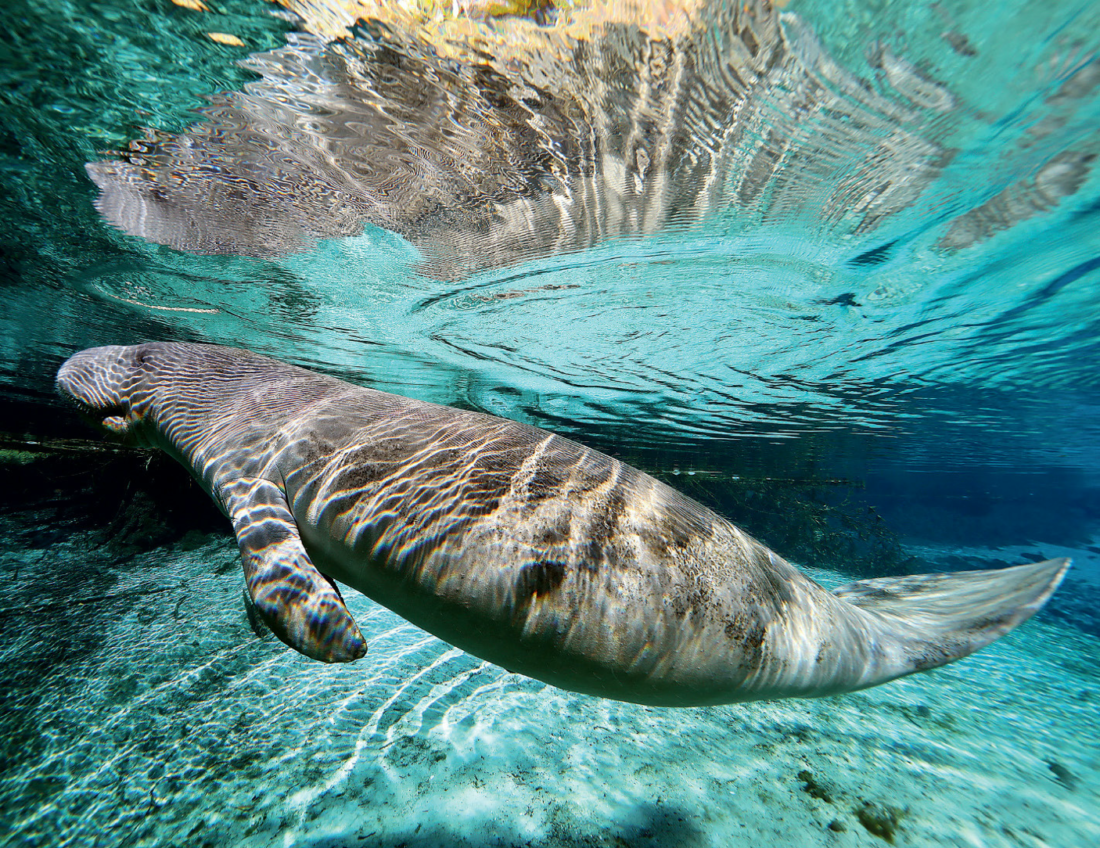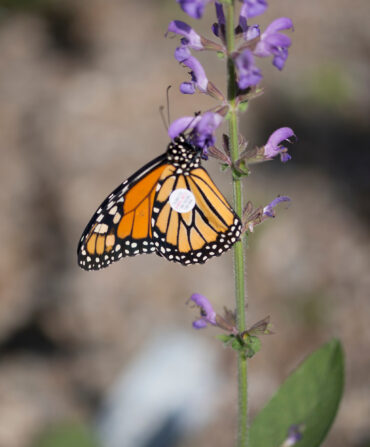Recent winters have not been kind to Florida’s gentle aquatic giants. Every November, many of the state’s manatees chase warmer waters and move inland; unlike other marine mammals such as dolphins and whales, the sea cows lack insulating blubber and need balmy temperatures of 68°F or above to survive. Until springtime, they huddle where they can find that warmth, grazing on seagrasses. Algal blooms caused by poor water quality, though, have lately devastated the seagrass supply—so far in 2022, 617 manatees have died, most of starvation; in 2021, the count totaled 1,100, making it one of the worst years on record for a population that totals roughly 8,000. Now a statewide network of biologists and nonprofits are piecing together a plan to pull the beloved species through the coming cold months.
Manatees, explains Carter Henne, are a tale of two coasts. “There’s East Coast manatees and there’s West Coast manatees,” says Henne, the president of Sea & Shoreline, an aquatic restoration firm that works statewide to grow and plant vegetation such as seagrasses. The latter, along the Gulf of Mexico, are chugging along. Those on the Atlantic side are not.
That struggle stems from the Indian River Lagoon, a key watershed that supports the majority of those manatees. At the northern end of the 156-mile-long estuary sits the Cape Canaveral power plant. For years, instead of heading to natural springs as they would otherwise, manatees have gathered by the hundreds around the plant’s outflow of warm water, passing down generational knowledge of the spot. But leaking septic tanks, coupled with fertilizer runoff from yards and farms, have contributed to a series of devastating algal blooms for more than a decade. The algae block sunlight from reaching the lagoon’s floor, choking the seagrasses. Then came 2018, a particularly rough year. “And that’s when the bottom of the system finally fell out,” says Andy Garrett, the manatee rescue coordinator for the Florida Fish and Wildlife Conservation Commission.
An adult manatee, which weighs around a thousand pounds, eats about 4 to 7 percent of its body weight a day. Without enough grass, an animal at the power plant faces a horrific choice: Venture out looking for food and freeze to death, or stay in the warm water and starve. And there’s not a quick fix; it’s difficult for seagrasses to bounce back because the bits that remain are so overgrazed, they can’t seed. The grasses also act as a crucial filter; without their regulating water quality, “it’s a chicken and the egg situation,” Henne explains. “There’s low seagrass because there’s low light, and there’s low light because there’s low seagrass.” Simply put: “There’s not enough salad in the salad bowl.”
To prevent starvation, “we are looking for interim strategies,” says Andy Walker, president of the Fish & Wildlife Foundation of Florida, the nonprofit that last year raised funds to buy an emergency 202,000 pounds of lettuce to feed manatees. At one time, scientists counted 836 of them feasting on the romaine and butter leaf by the power plant. “Thirty-five pounds of lettuce each isn’t a lot for these animals,” Walker says, “but we’re hoping it was the edge they needed to get through the winter. And if we need to feed every year until the seagrass is back, that’s what we’ll do.”
On a larger scale, biologists hope that the spotlight on the starving animals will illuminate the importance of seagrasses in an ecosystem. The vast underwater meadows provide refuge and food for thousands of other species, including fish, crabs, and seahorses. An estimated 90 percent of commercial seafood species rely on seagrass at some stage of their lives. And, Walker points out, “this system was on life support before manatees were affected. They aren’t the canaries in the coal mine—they are the last ones to get the memo.”
Thankfully, Henne and his team have experience restoring a system. They and the nonprofit Save Crystal River turned around that once heavily polluted, alga-dominated waterway, now a haven for Gulf Coast manatees. For the long term, Henne is growing eelgrass in nurseries to plant upstream in the Indian River Lagoon, in the hopes the grasses can get a foothold, start seeding, and exponentially expand.
In the short term, federal and state agencies and partners are preparing to help the manatees this winter. Additional zoos are signing on to rehabilitate emaciated animals; Garrett will be ready to coordinate rescues; Walker is in talks with lettuce companies about emergency feeding; and Henne will be using the quiet season to plant more grasses. “Floridians are very proud of what makes us unique, whether it’s sunshine, oranges, beaches, or manatees,” Henne says. “And this is the home of manatees. They are part of our heritage, our culture, and we’re going to fight for them.”








